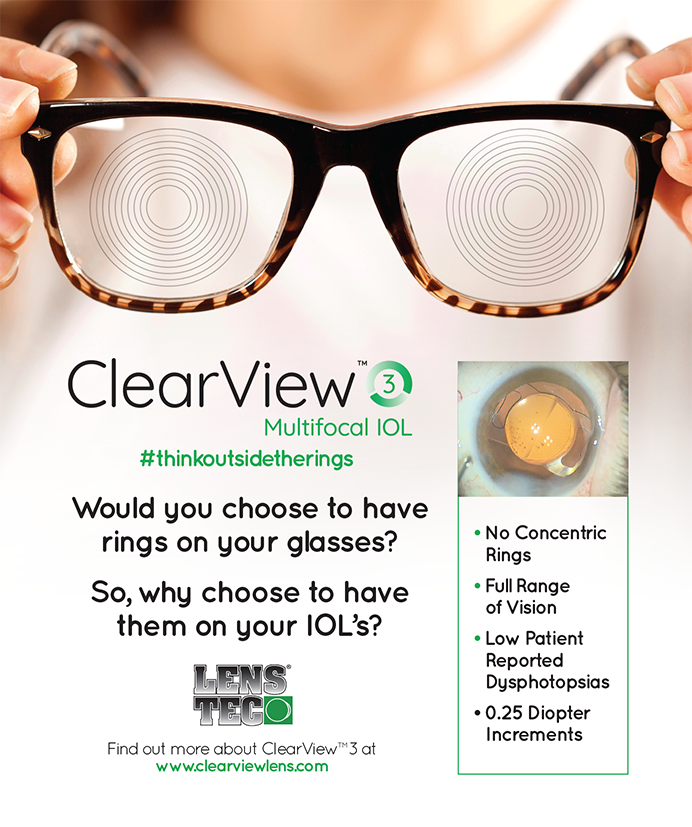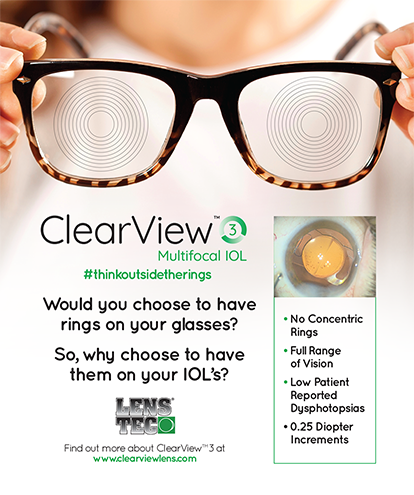Judging by the recent crowds at wavefront courses, it is evident that wavefront is piquing the interest of refractive surgeons. It is important to begin to understand the complexities of these measurement techniques, and to find ways of incorporating this new tool into the clinical setting. Before surgeons can feel enthusiastic about wavefront, it is necessary to examine the reasons why we are interested in investing time and resources into this new technology. The following is a summary of some of the clinical benefits that wavefront may be able to offer.
In the 1930s, Fritz Zernike derived a mathematical equation that described complex surfaces with uniform radii. Used in ophthalmology, the Zernike equation breaks down an optical surface into a series of terms that are assigned a magnitude and direction. These terms are used to quantify and classify aberrations in the human optical system. With more terms available to describe optical aberrations, physicians will be able to more specifically and accurately measure them.
What Is Normal?
Raw Zernike values give the clinician the ability to observe both the direction and magnitude of each aberration. This information becomes especially important as we discover that the directionality of an aberration can significantly affect visual symptoms. Although we are still operating with an elementary understanding of the effects of each of these aberrations, we are beginning to develop some upper and lower parameters that can define what is “normal” for eyes. Once we define these parameters, we can identify which aberrational terms fall within and outside of the normal range for each patient.
Customized Patient Treatment
Wavefront uses something called percentage match that enables physicians to determine the percentage of total ocular aberrations that fall within a given sphere and cylinder. This information may help to determine if a patient should proceed with conventional treatment (or retreatment), or wait for customized ablation. Additionally, we can inform patients that we are capable of treating a certain percentage of the optical aberrations that cause visual symptoms, thereby providing patients with a more realistic impression of the capabilities of conventional surgery.
The Potential to Customize Lenses
Although we are just beginning to examine some cataract patients with wavefront devices, theoretically we will be able to mathematically determine the aberrations that originate from the lens by subtracting the corneal aberrations from the total through-the-eye aberrations. Corneal Zernike terms can be calculated from surface topography with some mathematical manipulation.
Applications Outside of Surgery
Wavefront even offers the potential for use outside of the refractive surgery market. It may soon be a very effective tool in the general ophthalmic market as the public demands higher levels of vision in glasses, contacts, and implants.
The Future of Clinical Wavefront Use
Wavefront offers additional exciting prospects beyond its present research. Physicians may some day be able to combine surface topography, A-scan, and wavefront sensing in one device. Wavefront may be capable of providing objective measurements and standards for ocular diagnostics and treatment, as we will be able to observe aspects of the eye currently immeasurable by current technology. All of our expectations for wavefront data boil down to believing that it will bring clinicians a more comprehensive understanding of the human eye, which is something for which ophthalmologists are always striving. n
Text extracted from Dr. Durrie's presentation, “Wavefront Diagnostics as a Value-Added Tool,” presented at the “Breakfast of Champions,” hosted by Alcon on November 12, 2001 at the AAO meeting in New Orleans, Louisiana.


